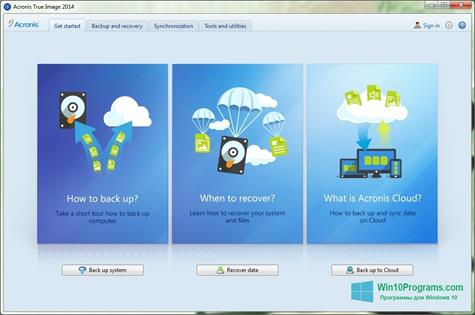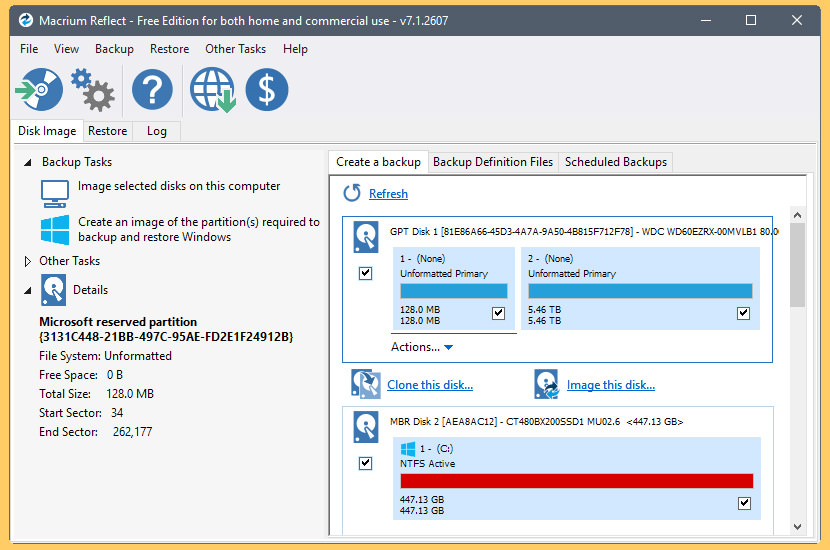

- #ACRONIS TRUE IMAGE WD EDITION SOFTWARE VS WINDOWS 10 BACKUP HOW TO#
- #ACRONIS TRUE IMAGE WD EDITION SOFTWARE VS WINDOWS 10 BACKUP UPDATE#
- #ACRONIS TRUE IMAGE WD EDITION SOFTWARE VS WINDOWS 10 BACKUP FULL#
- #ACRONIS TRUE IMAGE WD EDITION SOFTWARE VS WINDOWS 10 BACKUP PASSWORD#
Confirm your settings and then click on Start Backup. Then select the partitions you want in this image backup, or simply use the default. Once the setup wizard launches, assign the connected external drive as your backup destination. Click Create a System Image in the left panel. Click on System Image Backup in the lower-left corner. Go to File History following the instructions above. #ACRONIS TRUE IMAGE WD EDITION SOFTWARE VS WINDOWS 10 BACKUP FULL#
Now you are ready to create your full image backup. This is now the default, and while you can change the setting, it’s recommended to leave it as is to ensure automated, scheduled backups occur as planned.

A list of available drives will appear, and you choose the external hard drive as the destination for your backup.Īt this point, the option Add a Drive has changed to Automatically Back Up My Files.
In the Backup section, click on the Plus symbol next to the Add a Drive option below Back Up Using File History. #ACRONIS TRUE IMAGE WD EDITION SOFTWARE VS WINDOWS 10 BACKUP UPDATE#
In the Settings window, click on Update & Security and then select Backup. Open the Start Menu and click on Settings. To get started, connect your external drive and then: To back up with Windows’ native tool, you’ll use File History. #ACRONIS TRUE IMAGE WD EDITION SOFTWARE VS WINDOWS 10 BACKUP HOW TO#
How to do a full system backup in Windows 10. Windows 10 rescue media, either a USB or bootable DVD ( For information on using creating and using rescue bootable media, read this article). An external hard drive with enough storage space to fit your system image backup. #ACRONIS TRUE IMAGE WD EDITION SOFTWARE VS WINDOWS 10 BACKUP PASSWORD#
An Administrator account, since you’ll be asked for an Administrator password. That is one of the biggest complaints against Windows 10’s native tool, but we’ll make it easy for you. Some of these tools were part of earlier editions of Windows, while one is new to Win10.īut if you can’t find how to make a full image backup, you’re not alone. It was no better than the built-in windows backups for what I needed.Since backup is such a vital part of protecting your data, Microsoft has built a few tools into Windows 10 to help you create file-level and full system backups. I.personally never found a reason to use Acronis, and I tried it out twice. If you want something that can recover you from a broken boot drive, Windows can also do that. 
If you want a backup so you can say "oh shit, I deleted my wedding video!" windows can do that just fine. There are probably a few more 'features' that Acronis offers, like Cloud backups, but the question is, what features do you actually need. Or you could use whatever replaced Truecrypt for the backup drive itself. The features Acronis adds on top of that are things like automatic backup aging (you have to manually delete old backups when your disk gets full with Windows, Acronis will do this automatically, if configured - note, with base Windows 10, this becomes something you need to mess with maybe once every 3-6 months, depending on how you use your PC. The Windows Shadow Copy Service is what is used to create a windows backup, and Acronis uses that same 'front door' so to speak.
Windows 10 Backup & Restore is, at the base level, what Acronis uses to do its backup work. File History backup is basically the "Restore Point" feature of older versions fused with a SVN/CVS/Git for keeping versions of files.







 0 kommentar(er)
0 kommentar(er)
